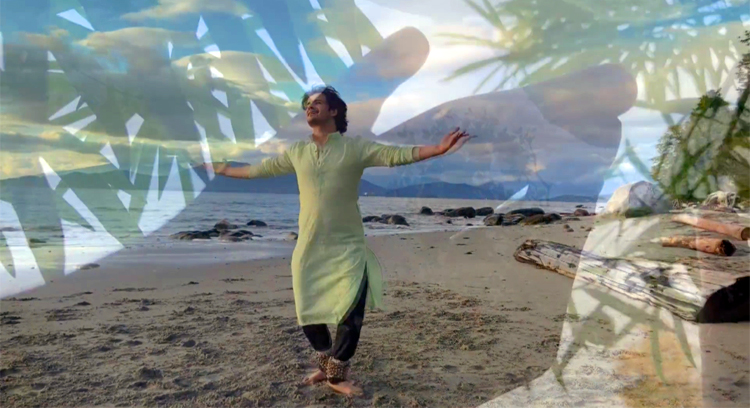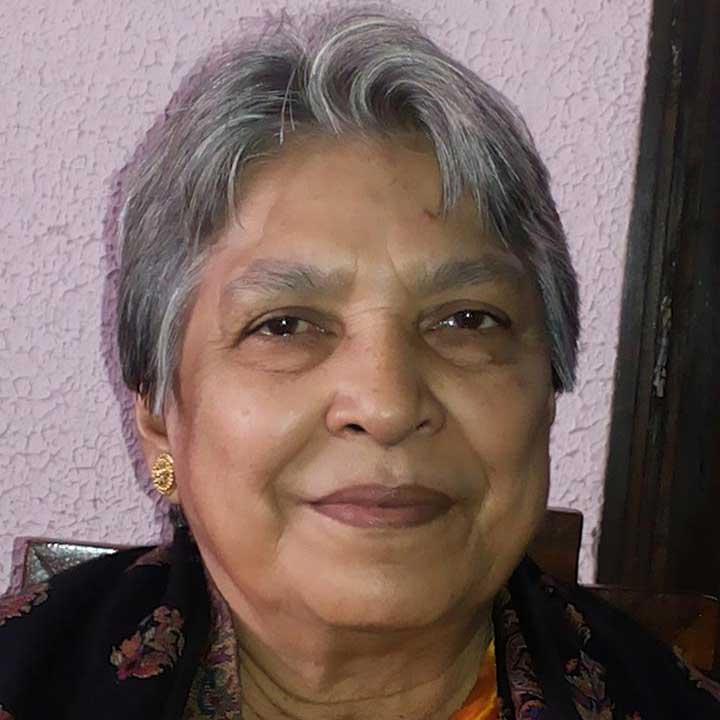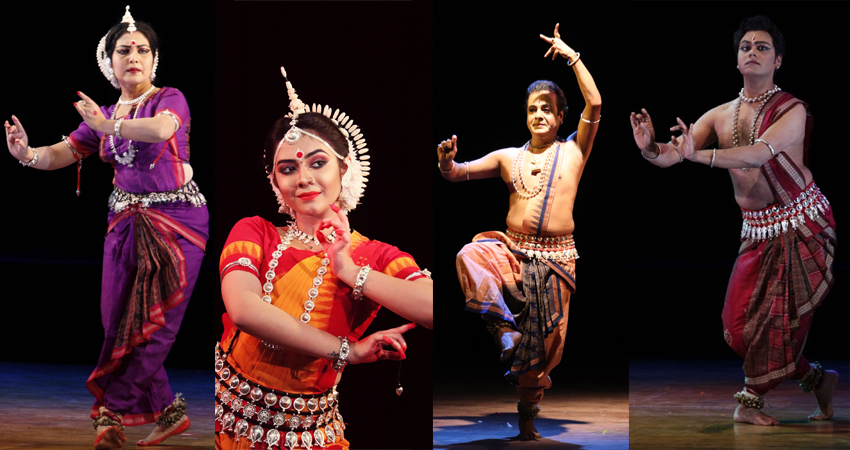Covid 19 pandemic that has spread over the whole world has tested the intelligence of man. Intelligence as defined by psychologist Robert Stemberg is “The mental abilities necessary for adaptation to as well as shaping of, any environmental context”. The Dance film SPARSH, a lockdown choreography by Aditi Mangaldas proved the definition of the intelligence of human beings, to adapt themselves to ever-changing situations and find their space to express themselves. It was a marvellous performance that culminated into a film by the Drishtikon family.
To shoot the film the Drishtikon family -most of whom are reputed Kathakas- had to learn to use the camera to take note of the angles and also keep in mind how much of the subject and its surrounding area they wished to be seen. In fact, they were, more or less, required to acquire the knowledge of camera handling like skilled filmmakers.
Jyotika Joshi of Sifas, Singapore, Jaspreet Singh Uppal, Jaipur, Sattvic from Vancouver, Canada, Minaz Khan, Prajyolota Sarma, Anjana Singh at Dhrishtikon who took the shots have done an excellent job in taking shots. Aditi Mangaldas a famed Kathaka did a sterling job in editing the film, keeping in view the camera-subject distance and maintain a continuous footage between edits.
Teaching and learning online-a feat mastered by modern man was by the members of the Drishtikon family locked down in 3 different continents and time zones. They then chose their own locations and shot the work themselves, post which Aditi edited it online.
On asked what the choreographer’s objective in making this film was, she said, “my objective of making this film was many folds. Besides finding new ways to re-imagine our dance, it was also a great motivating factor for the artists to think out of the box and come up with something unique, which they did.” It was remarkable indeed. “Besides this, we taught this choreography at an online workshop to earn fees so that it could help support the Drishtikon Foundation artists through ‘these difficult times.”
Why made you choose monsoon-a season liked by poets as the subject matter of the film?
“As we were starting this Tarana, the monsoons broke where I was, and hence this work is drenched in the monsoon…..the raindrop was the first “TOUCH” that we could feel within our rooms – arms outstretched from the window, without hesitation!”
“Along with the film SPARSH, we are also releasing a video, ‘The making of Sparsh’, comprising of conversations, common concerns, and shared laughter between all the artists who took up the challenge to make this work possible, this will give the young artists the valuable opportunity to learn and grow in this process.”
[adrotate group=”9″]
Why SPARSH?
She drew my attention to her note, “the global pandemic and the unprecedented lockdown has robbed humanity of many things including its freedom to ‘Touch’.
SPARSH – the touch – the forbidden word, came alive within each of us, as the monsoon arrived in its full glory, evoking all our senses. We could suddenly, unhesitatingly and unabashedly feel the texture, the touch, the smell, the sight, the sound of the falling raindrops. Within our confinement we found expansion.
Choreographed entirely online and re-imagined by the extended Drishtikon family, spread across India, Canada and Singapore; SPARSH attempts to let each one of us find that green patch within us.
“SPARSH is about creating physical intimacies during these difficult times of social distancing. Creating SPARSH has been about embracing change and re-imagining how we experience dance.”
It is this ability to change according to the demands of time that has made us what we are today.
Sparsh was conceptualized, choreographed and directed by Aditi Mangaldas. Music Composition: Ashish Gangani and Faraz Ahmad. Film Editing: Kuldeep Gaur | Mad Media House.Costumes: Drishtikon Dance Foundation I Rashmi Uppal I Aamrapali Bhandari I Gaurav Bhatti.Coordination: Kusum Arora I Sangeeta Rana I Prajyolita Sarma.
[adrotate group=”9″]
Danced by: The extended Drishtikon family
Rashmi Uppal | Anjana Singh | Aamrapali Bhandari | Minhaz Khan | Manoj Sonagra | Diksha Tripathi | Gaurav Bhatti
Musicians: Tabla – Mohit Gangani |Pakhawaj – Ashish Gangani |Vocal and Harmonium -Faraz Ahmad
The introductory text was inspired by Rutusamhara by Kalidasa.
The grandeur and the beauty of the monsoon through a tarana in Raag ‘Miya ki malhar’ that is interwoven with the technical aspect of Kathak in teen taal of sixteen beats.
The film transported the viewer to a world where there is nothing but beauty.










